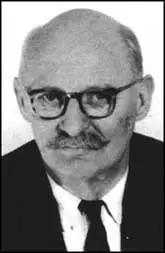Christopher Cockerell

Christopher Cockerell, the son of Sydney Cockerell, the famous typographer, was born on 4th June, 1910. Cockerell studied engineering at Peterhouse College, Cambridge before carrying out research into radio and electronics.
In 1935 Cockerell began work at the Marconi Company. At first he was involved in producing broadcasting equipment for television. In 1939 he turned his attentions to the war effort and was a member of the team who produced the first radio detection finder, that was installed in all British bombers.
After the Second World War Cockerell left Marconi and bought a boat business on the Suffolk Broads. Over the next few years he began experimenting with ways of making boats go faster by reducing the friction of water. At first he worked on the idea of air lubrication of the hull. Eventually he came to the conclusion that a major reduction in drag could only be obtained if the hull could be supported over the water by a thick air cushion.
In 1953 Cockerell began work on the hovercroft. After successful experiments on Oulton Broad, Cockerell approached the government National Research Development Council (NRDC) who invested £1,000 in his invention. However, it took him another three years before he got full commercial backing for his project.
The SR.NI hovercraft crossed the English Channel from Calais and Dover on 25th July, 1959. At that time it was capable of 30mph at a height of 15 inches. However, Cockerell discovered that his hovercraft could not negotiate waves more than 50cms high and had to fit a flexible skirt to make is useable in all conditions.
Cockerell was only paid £150,000 for his invention that took over ten years to develop. Attempts to have this sum increased was unsuccessful. Christopher Cockerell, who was knighted in 1969, and elected Fellow of the Royal Society, died on 1st June, 1999.
